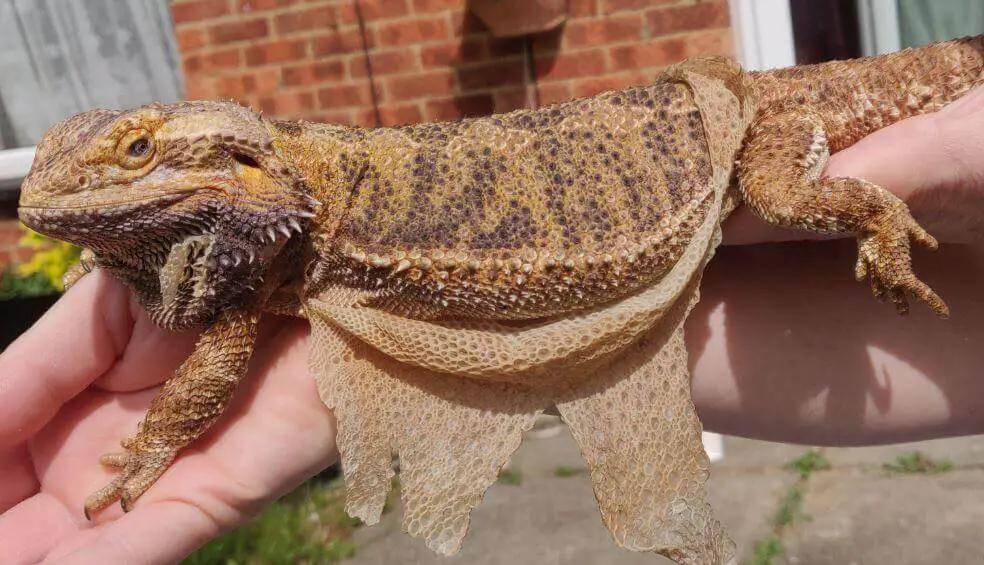If you are wondering about what bearded dragon shedding problems your pet will deal with, you are in the right place.
Shedding is a natural process that all reptiles, including bearded dragons, go through.
They will face some shedding problems whether they like it or not, and you will need to do something about it as their owner.
Typically, a baby bearded dragon might shed its skin more often than an adult because it grows at a rapid rate.
This process is fast or slow depending on their diet, growth, health, age, etc.
Your bearded dragons might exhibit various uncomfortable symptoms that make you want to help them, but please avoid trying to remove their skin or peel it off.
Your attempt is just harmful to them.
What should you exactly do to help the bearded dragon shed off their skin easily?
We will give you some advice on how to take care of your bearded dragons and resolve their bearded dragon shedding problems.
Related Posts:
- Can More Than One Beardie Live Together?
- What Is MBD in Beardies?
- Is My Beardie Fat?
- How Big Can a Beardie Get?
- Reasons Why Your Beardie Turned White and Died
- Why Does My Beardie Stare at Me?
- Beardies Male or Female: What Is Better Pet?
How to Know If a Bearded Dragon Is Shedding?
Bearded dragons shed to replace their old skin with new skin. They do this periodically as they continue to grow, which allows them to accommodate their increasing size.
During shedding, the outermost layer of their skin, which can become dry, dull, or flaky, is shed to reveal fresh and vibrant new skin underneath.
Their behavior may change once the shedding process starts, such as changing the color of their skin, loss of appetite, eating their skin, or getting lethargic.
Adequate shedding is important for bearded dragons to maintain proper body functions, including thermoregulation and protection against infections.
Provide them with appropriate humidity and a comfortable environment during shedding to help facilitate this process smoothly.
Is Your Bearded Dragon Lethargic During the Shedding?
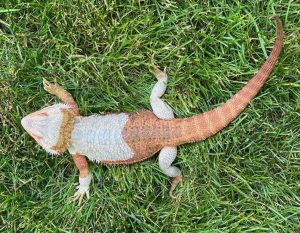
Before your pet starts the shedding process and faces the bearded dragon shedding problems, they will show a number of strange symptoms to warn you in advance.
Typically, they seem to be so tired and exhausted. You will see them always lying in the same place all day and never doing anything else.
Your bearded dragon might display a slight lethargy. However, solely fixating on this symptom could lead you to believe it is sick or overly exhausted.
In reality, they require a period of rest to recuperate and restore their well-being.
Related Posts:
- Why Is My Bearded Dragon Bobbing His Head?
- Why Is My Bearded Dragon Breathing Heavy?
- Why Is My Bearded Dragon Closing Eyes When Stroked?
Is Your Bearded Dragon Shedding and Not Eating?
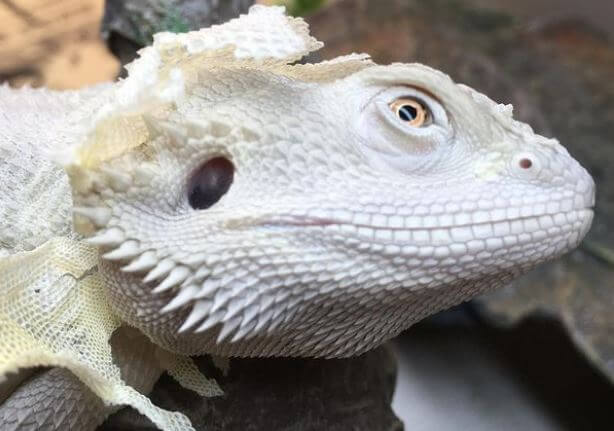
One of the significant signs is a loss of appetite, most of the beardies tend to refuse to eat or eat less.
It’s pretty common during this process.
When you see this situation, don’t worry here.
Just calm down and observe if your bearded dragon is shedding or not.
If this process is happening or imminent, that’s really a good sign.
Everything will be back to normal soon.
Of course, if not, I suggest you should take your beardies to visit a vet.
Is Your Bearded Dragon Eating Their Skin?
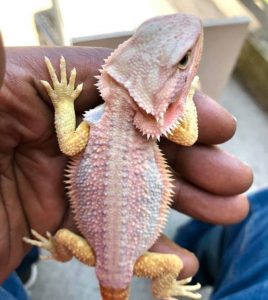
Imagine that you see your bearded dragon eating the old layer of its skin, how do you feel?
Don’t be so surprised about that!
It is one of the common bearded dragon shedding problems you can see regularly during this natural stage, but this is not really a problem.
As you know, the skin contains many calcium and other nutrients.
During this process, your beardie lacks nutrients due to loss of appetite.
So again, eating their old skin is considered the best way for your beardies to make up for the lack of calcium during this process.
Use cleaning aids like Cold Life Non-Abrasive Cleaning Sponges to remove dust and grime on the glass surface or their surrounding habitat, and make sure that their skin is completely clean completely.
If you do that, it is no longer a big issue for bearded dragons to eat the old layer of their skin again.
How Does the Bearded Dragon’s Skin Change?
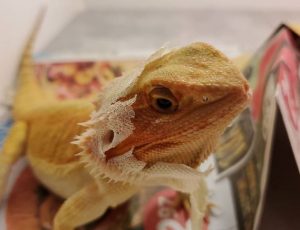
There is no exception for humans in the shedding skin process.
Every day, humans have thousands of dead skin cells that need to be replaced, whereas reptiles undergo this process their entire life.
During this natural process, their skin changes.
When your beardies scratch off their old skin, their skin tends to become duller or darken, eventually turning white during the pre-shedding process.
So don’t worry about that!
Sometimes, their skins are so tight that they can’t flake it off easily, which causes the bearded dragon shedding to take so much time and they feel quite uncomfortable and painful.
Read More:
- Can Beardies Eat Chard?
- Can Beardies Eat Peas?
- Do Beardies Eat Radish Greens?
- Do Beardies Eat Dill?
- Can Beardies Get High?
- Can Beardies Eat Honeydew Melon?
Why Are the Bearded Dragons Not Shedding at One Time?
In some cases, your bearded dragon will not shed at one time, especially on the tail, nails, and toes due to various reasons.
It might be due to their growth. A baby beardie will take this process more easily than an adult because it goes through rapid growth.
Therefore, its skin will shed more often than others.
After that, check the temperature and humidity in the place where the beardies live.
Then check if the UVB light mode or Zoo Med Repti Basking Spot Bulb, 100 watts, E27 threaded base, and set of 2 bulbs are right or not. If not, adjust the source of light and level of light again.
Moreover, you should provide them with a sufficient diet because their diet also plays an important role in bearded dragon shedding.
I have ever witnessed many reptiles, not just beardies, get injured due to using wrongly shedding aid or their owner’s attempt at their shedding.
There are 4 safe and efficient beardie shedding tips for you to take care of your beardie in the best condition.
4 Tips for Solving Bearded Dragon Shedding Problems
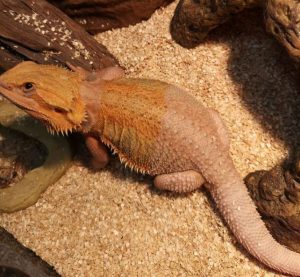
1. Keep Moist Frequently
If this process is too difficult to pull off, don’t worry.
A good idea is to keep your beardie moist, which helps to soften your bearded dragon’s skin and come it off easily.
Misting the beardies not only increases the humidity of their living environment but also promotes their ability to hydrate.
Only using a Zilla Calcium Supplement Reptile Food Spray will not only increase the moisture in their habitats but also provide the loss of calcium and nutrients during this process.
It is not a too bad idea for you to spray clean water on your bearded dragon’s skin several times per day during this process.
The more frequently we mist, the more easily their skin flakes off.
2. Increase the Frequency of Bathing
Once your bearded dragon is supposed to shed their skin, you should bathe them more often, which helps speed up this process.
What you only need to do is to put your pets in a sink, fill this sink no higher than their shoulder, and then soak them in 15-20 minutes (no soap, please take note).
A useful tip for using water to bathe the beardie is to try your best to use purified water instead of tap water as it contains chlorine and several harmful metals for your beardie.
In some cases, only bath or spraying your beardie is not enough to soften or shed off their skin. You should look for some other shedding aids for this process.
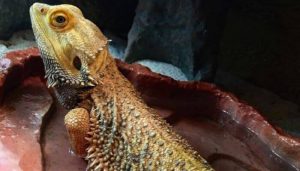
3. Try to Use Shedding Aids
An additional solution for these problems is using a shedding aid.
It’s easy for you to search for an available tool to help your bearded dragon shed more quickly on e-commerce sites such as Alibaba, Taobao, Amazon, etc.
You can choose a suitable aid to remove dry sheds from your pets or keep your bearded dragon moist and soft.
By the way, if you are going to use a brush to scratch their skin, please gently brush on their skin to avoid injuring or bleeding them.
The right way is better than the right aid.
A shedding aid is quite convenient, but the best way I can think of is to let them shed their skin off naturally.
4. Don’t Shed Their Skin Off Yourself
No matter how much this process takes time, don’t panic!
Don’t pull the bearded dragon’s skin off or peel their skin yourself.
Maybe you think you give a hand for their shedding, but you are directly injuring your pets yourself.
Under any circumstance, you should avoid interrupting this process. Let them do it naturally.
If you also try all the methods mentioned above, your bearded dragon’s skin is still stubborn or persists.
Take them to the herp vet immediately!
Conclusion
The shedding process is naturally common for all, with no exception for humans.
Instead of keeping away from this, face them by observing their symptoms during this process to make sure that they don’t have something abnormal.
Last but not least, you should consider applying those solutions mentioned to solve your bearded dragon shedding problems more easily and quickly.
Key points for bad bearded dragon shed:
When a bearded dragon experiences difficulties shedding, it’s essential to assist in the process to prevent complications. Here’s a concise breakdown in bullet points for quick reference:
1. Signs of Bad Shedding:
- Incomplete Shedding: Pieces of skin clinging to the body, particularly around toes, tail, or limbs, causing discomfort or constriction.
- Dry or Flaky Skin: Skin appearing dry, stuck, or discolored, hindering the shedding process.
2. Causes of Poor Shedding:
- Low Humidity: Insufficient humidity levels in the enclosure can lead to difficulty shedding. Bearded dragons need moderate humidity during shedding to facilitate skin removal.
- Lack of Moisture: Inadequate hydration or access to soaking or misting can contribute to tough shedding.
3. Remedial Measures:
- Increased Humidity: Raise humidity levels in the enclosure to aid shedding. Mist the enclosure or provide a shedding box with dampened substrate.
- Warm Baths: Soak your bearded dragon in a lukewarm bath to soften the skin and facilitate shedding. Gently rub areas with stuck shed using a soft toothbrush or cloth.
4. Handling Problem Areas:
- Toe and Tail Tips: Pay special attention to these areas as retained shed can restrict blood flow and lead to serious issues.
- Avoid Forceful Removal: Refrain from forcibly pulling off stuck shed, as it can cause skin damage and pain.
5. Dietary Considerations:
- Hydration: Ensure your bearded dragon is well-hydrated by offering fresh water and incorporating moisture-rich foods like cucumbers or squash.
- Supplementation: Calcium and vitamin-rich foods support overall skin health, aiding in shedding.
6. Environmental Factors:
- Substrate Choice: Use appropriate substrates that don’t cling to shed skin, such as paper towels or reptile carpet, to prevent adherence.
- Enclosure Maintenance: Regularly clean the enclosure to remove shed skin and maintain a clean, healthy environment.
7. Veterinary Assistance:
- Persistent Issues: If shedding problems persist despite home remedies, seek advice from a reptile vet. They can assess the situation and provide necessary guidance or medical intervention.
8. Prevention is Key:
- Consistent Care: Maintain proper humidity levels, hydration, and a healthy diet to prevent future shedding difficulties.
In summary, addressing bad shedding in bearded dragons involves providing a conducive environment, gentle assistance, and adequate hydration to aid in the shedding process. Monitoring your dragon’s shedding regularly and addressing issues promptly are crucial for their skin health and overall well-being.
Further Reading:
- Carolina Custom Cages Terrarium Review
- 8 Best Basking Rocks for Beardie: What Is the Best Choice?
- 10 Best Thermometers for Beardie: How to Choose the Best One?
- 5 Best Beardie Lighting Setup for Beardie Lovers
- 9 Best Heat Lamps For Beardie: Natural Habitat Provided

